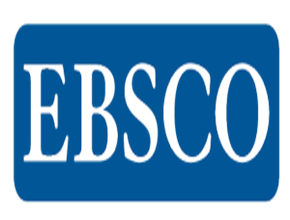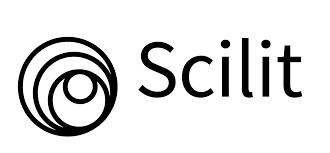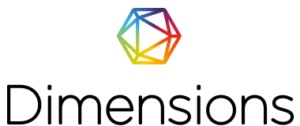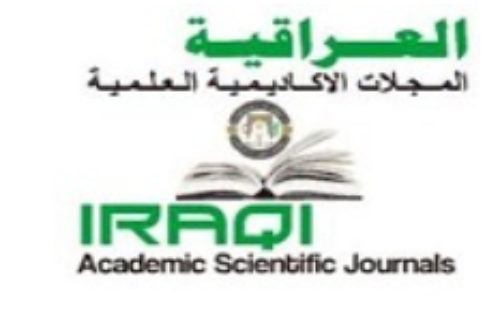Analysis of Physical Properties and Evaluation of Heavy Element Concentrations in Euphrates River’s Fish in Nasiriyah City
DOI:
https://doi.org/10.32792/utq/utjsci/v12i1.1380Keywords:
NUT, Air-temperature, water-teperature , trace elementAbstract
Environmental pollution is one of the most prominent problems that facing the world at the present time. The current study was conducted on the Euphrates River in the center of Nasiriyah city during the period time from September 2023 to Marsh 2024. Three locations were used in this study. The length of the river and some physical and chemical parameters of the water were studied. The temperature of the water and air was measured, in addition to the distribution of four heavy metals in fish. The current results were showed that the air temperature increased significantly in the third water position, and decreased significantly in the other water position, the water temperature increased significantly in the first water position, while decreased significantly in the other water positions. In contrast, the level of Neutrophil increased significantly in the second water position and decreased in the first water position at p. value < 0.05. The current results were showed a significant increase in the level of both Cd and Pb in muscle compared with gills, while the level of both Zn and Cu decreased significantly in muscle compared with gills. The study also recorded a significant difference at p. value < 0.05 in the level of trace elements between muscles and gills of fish during summer. The current results showed a significant increase in the level of all involved trace elements (Cd, Pb, Zn and Cu) in gills of fish comparing with muscles of fish during winter
Received: 2025-04-24
Revised: 2025-05-27
Accepted: 2025-06-28
References
[1] M. Kummu et al., "The world’s road to water scarcity: shortage and stress in the 20th century and pathways towards sustainability," Scientific Reports, vol. 6, no. 1, Dec. 2016, doi: 10.1038/srep38495.
[2] M. N. Koleva, A. J. Calderón, D. Zhang, C. A. Styan, and L. G. Papageorgiou, "Integration of environmental aspects in modelling and optimisation of water supply chains," The Science of the Total Environment, vol. 636, pp. 314–338, Apr. 2018, doi: 10.1016/j.scitotenv.2018.03.358.
[3] Z. H. Nasser and K. K. Fahad, "Study of some Growth Parameters of Grass Carp Ctenopharyngodon idella V. Cultured in Floating Cages," IOP Conference Series: Earth and Environmental Science, vol. 1262, no. 7, p. 072065, Dec. 2023, doi: 10.1088/1755-1315/1262/7/072065.
[4] A. A. Obais and A. H. Al-Fatlawi, "Assessment and monitoring of Shatt Al-Hilla River within the middle Euphrates region," Journal of Babylon University/Engineering Sciences, vol. 20, pp. 994-1004, 2012.
[5] A. S. abd alameer Albaaj, "Analysis and evaluation of sediment pollutants of Euphrates River at Al-Nasiriyah city, south of Iraq," University of Thi-Qar Journal of Science, vol. 10, no. 2, pp. 126-130, 2023.
[6] W. A. Freewan and A. M. Al-Rashidi, "The negative effects of waste on the urban environment in the city of Al-Khoms (waste into sustainable energy)," Journal of Pure & Applied Sciences, vol. 20, no. 4, pp. 96–102, Dec. 2021, doi: 10.51984/jopas.v20i4.1707.
[7] F. M. Hassan and A. R. Mahmood, "Evaluate the efficiency of drinking water treatment plants in Baghdad City – Iraq," Journal of Applied & Environmental Microbiology, vol. 6, no. 1, pp. 1–9, Dec. 2017, doi: 10.12691/jaem-6-1-1.
[8] M. J. Nasser, "Evaluation of some growth indicators and heavy elements in water and tissues of common carp Cyprinus carpio farmed in floating cages in the Euphrates River," M.S. thesis, College of Agriculture, University of Thi-Qar, Iraq,2022.
[9] F. M. Hassan and A. R. Mahmood, "Evaluate the efficiency of drinking water treatment plants in Baghdad City – Iraq," Journal of Applied & Environmental Microbiology, vol. 6, no. 1, pp. 1–9, Dec. 2017, doi: 10.12691/jaem-6-1-1.
[10] A. Alengebawy, S. T. Abdelkhalek, S. R. Qureshi, and M.-Q. Wang, "Heavy metals and pesticides toxicity in agricultural soil and plants: ecological risks and human health implications," Toxics, vol. 9, no. 3, p. 42, Feb. 2021, doi: 10.3390/toxics9030042.
[11] D. Pal and S. K. Maiti, "An approach to counter sediment toxicity by immobilization of heavy metals using waste fish scale derived biosorbent," Ecotoxicology and Environmental Safety, vol. 187, p. 109833, Oct. 2019, doi: 10.1016/j.ecoenv.2019.109833.
[12] C. Copat et al., "Heavy metals concentrations in fish and shellfish from eastern Mediterranean Sea: Consumption advisories," Food and Chemical Toxicology, vol. 53, pp. 33–37, Dec. 2012, doi: 10.1016/j.fct.2012.11.038.
[13] P. L. Garnero, M. De Los Angeles Bistoni, and M. V. Monferran, "Trace element concentrations in six fish species from freshwater lentic environments and evaluation of possible health risks according to international standards of consumption," Environmental Science and Pollution Research, vol. 27, no. 22, pp. 27598–27608, May 2020, doi: 10.1007/s11356-020-08756-7.
[14] R. A. Hanaf, "The relationship between some heavy metals and the productivity of phytoplankton and the biomass of some aquatic plants prevailing in selected areas of Shatt Al-Arab, Southern Iraq," PhD thesis, College of Agriculture, University of Basrah,Iraq, 2016.
[15] C. Leite et al., "The role of warming in modulating neodymium effects on adults and sperm of Mytilus galloprovincialis," Journal of Environmental Management, vol. 358, p. 120854, Apr. 2024, doi: 10.1016/j.jenvman.2024.120854.
[16] M. M. Taher, A. Y. Al-Dubakel, and S. J. Muhammed, "Growth parameters of common carp Cyprinus carpio cultivated in semi-closed systems," Basrah Journal of Agricultural Sciences, vol. 31, no. 1, pp. 40–47, Jul. 2018, doi: 10.37077/25200860.2018.74.
[17] R. M. Jasim and N. K. K. Fahad, "Study of the concentration level of heavy metals in water and some tissues of common carp, Cyprinus carpio L., which is cultured in cages in the Euphrates River," University of Thi-Qar Journal of Agricultural Research, vol. 12, no. 2, pp. 89–97, Oct. 2023, doi: 10.54174/utjagr.v12i2.266.
[18] S. G. Khader and H. F. Okab, "Assessment of glucose metabolism in thalassemia patients with type two diabetes in Thi-Qar, Southern Iraq," International Journal of Health Sciences, pp. 2929–2935, Aug. 2022, doi: 10.53730/ijhs.v6ns8.12279.
[19] S. H. Saki and M. A. Al-Shaheen, "Study of some physical and chemical properties of the southern part of Al-Hawizeh Marsh, Southern Iraq," Iraqi Journal of Aquaculture, vol. 19, no. 1, pp. 33–52, Sep. 2022, doi: 10.58629/ijaq.v19i1.401.
[20] A. A. Hassan and A. K. Ibrahim, "Physicochemical properties of water in Shatt Al-Basra Canal, Southern Iraq," Journal of Environmental Sciences Thi-Qar Arts Journal, vol. 9, no. 47, Dec. 2024, doi: 10.32792/tqartj.v9i47.535.
[21] S. A. Abed, S. H. Ewaid, and N. Al-Ansari, "Evaluation of water quality in the Tigris River within Baghdad, Iraq using multivariate statistical techniques," Journal of Physics Conference Series, vol. 1294, no. 7, p. 072025, Sep. 2019, doi: 10.1088/1742-6596/1294/7/072025.
[22] M. Shahjahan et al., "Effects of heavy metals on fish physiology – A review," Chemosphere, vol. 300, p. 134519, Apr. 2022, doi: 10.1016/j.chemosphere.2022.134519.
[23] R. W. M. Kwong, "Trace metals in the teleost fish gill: biological roles, uptake regulation, and detoxification mechanisms," Journal of Comparative Physiology B, vol. 194, no. 5, pp. 749–763, Jun. 2024, doi: 10.1007/s00360-024-01565-1.
[24] M. Moniruzzaman and N. C. Saha, "Impact of variation in abiotic factors and metal accumulation pattern on the annual rhythmicity of antioxidants and maintenance of oxidative balance in fish gill," Chemistry and Ecology, vol. 37, no. 2, pp. 149–163, Nov. 2020, doi: 10.1080/02757540.2020.1843159.
[25] P. Ganeshkar et al., "Eco-friendly nano-copper synthesis: gene and enzyme modulation for combating cadmium and ammonia toxicity in fish," Biological Trace Element Research, Apr. 2025, doi: 10.1007/s12011-025-04594-1.
[26] A. O. Ubalua, U. C. Chijioke, and O. U. Ezeronye, "Determination and assessment of heavy metal content in fish and shellfish in Aba River, Abia State, Nigeria," KMITL Science and Technology Journal, vol. 7, no. 1, pp. 16–23, Jan. 2007.
[27] A. K. Nor Hasyimah et al., "Assessment of cadmium (Cd) and lead (Pb) levels in commercial marine fish organs between wet markets and supermarkets in Klang Valley, Malaysia," International Food Research Journal, vol. 18, no. 3, pp. 795–802, Dec. 2011.
[28] M. Tuzen and M. Soylak, "Determination of trace metals in canned fish marketed in Turkey," Food Chemistry, vol. 101, no. 4, pp. 1378–1382, Apr. 2006, doi: 10.1016/j.foodchem.2006.03.044.
[29] W. J. H. Al-Marmadi, "A comparative anatomical and physiological study of the effect of some heavy metals on two species of fish in the Damlaj River and the Shamiya River," M.S. thesis, College of Education, Al-Qadisiyah University, Iraq, 2019.
Downloads
Published
License
Copyright (c) 2025 University of Thi-Qar Journal of Science

This work is licensed under a Creative Commons Attribution 4.0 International License.












